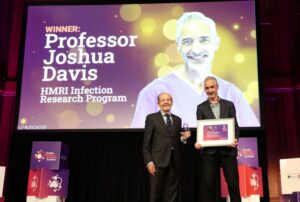
About one-third of all drugs approved by the Food and Drug Administration target a crucial family of cell membrane receptors known as G protein-coupled receptors (GPCRs). These receptors are essential for human health, playing roles in nearly every physiological function. Embedded in cell membranes, GPCRs detect a variety of biological signaling molecules outside the cell, which then activate proteins called G proteins and beta-arrestins inside the cell to execute numerous functions.
Despite the abundance of GPCR-based drugs, scientists acknowledge that these receptors still hold untapped potential for new treatments. According to Steven Olson, PhD, the executive director of Medicinal Chemistry at the Sanford Burnham Prebys Medical Discovery Institute’s Center for Therapeutics Discovery, “Out of 826 GPCRs, approximately 165 are validated drug targets, so many of them have not been drugged.”
Innovative Research Unveils New Mechanisms
Researchers at Sanford Burnham Prebys, the University of Minnesota, and Duke University have published findings in Nature on October 22, 2025, demonstrating how a small molecule can bind a GPCR from inside the cell, directing the receptor’s signaling. This breakthrough could allow drug designers to control how compounds bias signaling, potentially favoring therapeutic pathways while minimizing unwanted side effects.
Lauren Slosky, PhD, an assistant professor of Pharmacology at the University of Minnesota and corresponding author of the study, noted, “People have understood the need for bias in drug design for a long time. These compounds, however, have been especially challenging to create because our understanding of how signaling bias is achieved is incomplete.”
Exploring the Neurotensin Receptor 1
The research team focused on a GPCR called neurotensin receptor 1 (NTSR1) and a biased small molecule called SBI-553. They examined the sixteen G proteins and two beta-arrestin proteins that can be activated by receptor signaling. Slosky remarked, “We quickly started to appreciate that the black-and-white view we’d had, which was that our compound turned the G proteins off and the beta-arrestin on, was way too simple.”
The scientists discovered that SBI-553 generated a wide range of activity levels in different G proteins and beta-arrestins. Understanding what makes a compound a biased modulator is crucial for designing compounds with precision in the array of G proteins they activate.
Implications for Drug Design
The research demonstrated that SBI-553 biases NTSR1 signaling by acting as a molecular bumper for some G proteins and as molecular glue for others. Olson explained, “When bound, SBI-553 serves as a molecular bumper blocking the typical way G proteins bind with NTSR1. It can also act as a molecular glue promoting the binding of certain subtypes of G protein that can achieve an alternative binding conformation.”
By modifying SBI-553, the scientists hypothesized they could alter its signaling bias to favor different G proteins and beta-arrestins. They tested 29 compounds similar to SBI-553, finding significant variation in their activation and inhibition of G protein subtypes and beta-arrestins.
“We’ve shown that small differences in the molecule can lead to big differences in the downstream signal,” said Slosky. “And that you can change which ones get turned on and which ones get turned off based on targeted changes in the chemical structure of the modulator,” added Olson.
Overcoming Previous Challenges
Targeting NTSR1 for treating addiction and psychiatric disorders has been explored for decades, but drug discovery efforts have been hindered by severe side effects. Unlike unbiased compounds that proved unsafe, SBI-553 avoids problematic side effects such as hypothermia and hypotension. The research team theorized that activating a particular G protein caused these side effects. They tested this by comparing SBI-553 with a similar molecule, SBI-593, which could not fully block the suspected problem protein, Gq.
“Unlike SBI-553, in mice treated with a balanced agonist, SBI-593 was unable to prevent hypothermia,” Slosky noted. “In this case, a small change in the structure led to changes in signaling and biology.”
Future Prospects in Drug Discovery
This new approach opens up many more GPCRs, including NTSR1, as potential drug targets. Historically, few biased drugs for GPCRs have been developed due to the complexity of interactions. By discovering molecules that bind to the intracellular site, the mechanisms responsible for bias become more predictable, as these molecules directly interact with both the GPCR and the G proteins.
“We’ve now shown that this intracellular site is druggable, and it opens up an enormous field of study,” said Olson. “Moreover, we also demonstrated that the interactions are predictable, which is an important factor for anyone investing in drug discovery.”
Madelyn Moore and Kelsey Person, graduate students in the Slosky lab at the University of Minnesota, share first authorship of the study. Other contributors include Michael R. Jackson from Sanford Burnham Prebys and several researchers from the University of Minnesota, Duke University, and Japanese institutions.
The study was supported by various organizations, including the National Institutes of Health, the National Institute on Drug Abuse, and the Japan Society for the Promotion of Science. The study’s DOI is 10.1038/s41586-025-09643-2.




